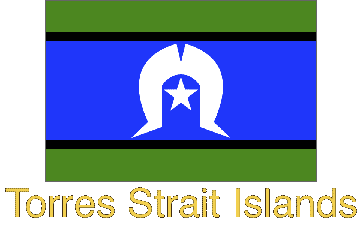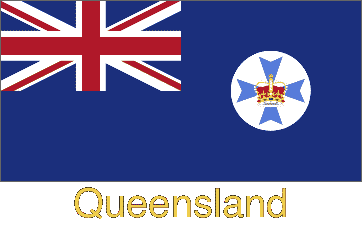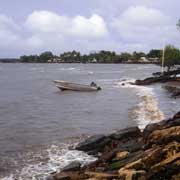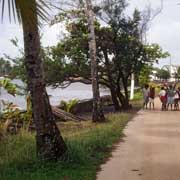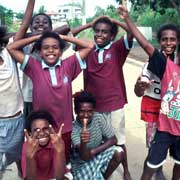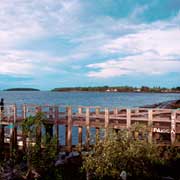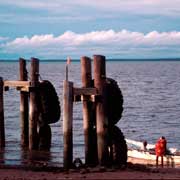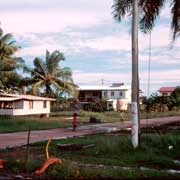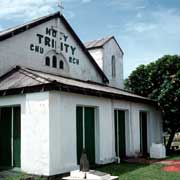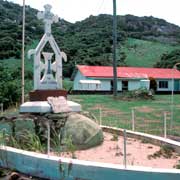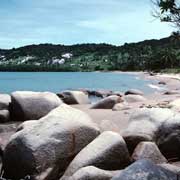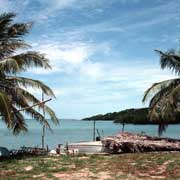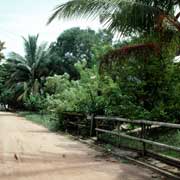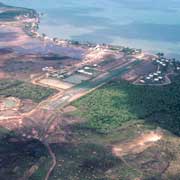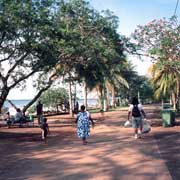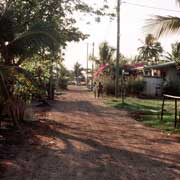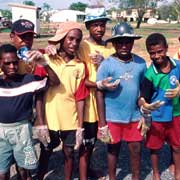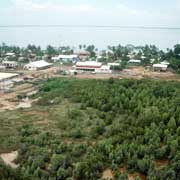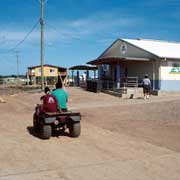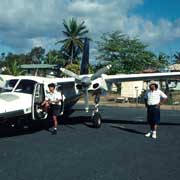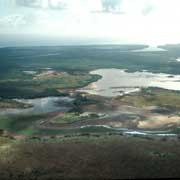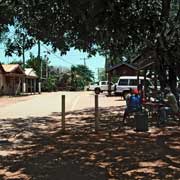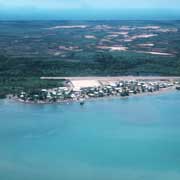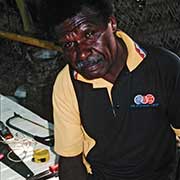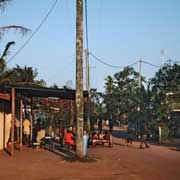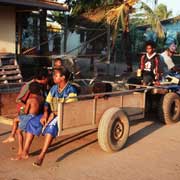Photos of the Top Western Torres Strait Islands, Australia
The Top Western Torres Strait Islands
The Top Western group of Torres Strait Islands consist of Saibai, Dauan and Boigu, located about 120 kilometres north of Thursday Island and within sight of the coast of Papua New Guinea - the most northerly communities of Australia. The language spoken is Kalaw Kawaw Ya, and there are strong traditional kinship ties between the islands.
you may then send it as a postcard if you wish.
Saibai is a fairly large low-lying mangrove island, 23 kilometres long, only 4 kilometres from the Papua New Guinea mainland. There are two villages: Saibai on the north western coast with around 170 people and Churum or Surum ("White Sand"), in the southwest, with about 130. Just north, separated by a channel, is uninhabited Kauamag Island. Saibai Islanders have always traded with nearby Papua New Guinea, although their traditional enemies were the Kiwai of the Fly River area. The Saibai Islanders accepted Christianity in 1871 with the arrival of the London Missionary Society. The missionaries removed the sacred "Adtihibuya" stone, which was venerated because it protected locals from the Kiwai. During World War 1, the "Zaman Wislin" cargo cult briefly flourished on Saibai. After Saibai Island was devastated by a tidal wave in the late 1940s, a group of Saibai Islanders, led by a man named Bamaga Ginau, accepted Government assistance and resettled on Cape York; the reserve that was established took Bamaga's name. When Papua New Guinea became independent in 1975, the Saibai Islanders demanded they would remain Australian, as there were claims by PNG over these Top Western islands, and their wish was granted. There is however, regular trade between Saibai and Papuan villages and there are family ties between them; the locals, carrying a permit, may cross the border, something outsiders may not do. Strict quarantine regulations are in force however.
Dauan is a small island just to the west of Saibai. Mount Cornwallis is the highest peak in the Strait, rising to nearly 300 metres; it is actually part of the Great Dividing Range. The soil is relatively fertile and supports local family gardens. It is noted for its cool, freshwater permanent springs. The surrounding waters yield abundant fish. Dauan is serviced by boat, barge and helicopter; the nearest airport is on Saibai, 6 kilometres to the northeast. The community is built along the narrow coastal lowland, backed by steep granite peaks. Like other islands of the Torres Straits, municipal services are provided by the local Community Council of Dauan Island. In 1871 two brothers, Garmai and Jawai (Dheobau Clansmen), accompanied missionaries from the London Missionary Society to Saibai and influenced the islanders to accept the missionaries. During the pearling era most of the men worked on pearling luggers, and enlisted with the Torres Strait Light Infantry when World War 2 broke out. In July 2000 it celebrated its successful Native Title Land Claim to the island.
Boigu is Australia's most northerly inhabited island, 6 kilometres from the Papua New Guinea coast. The two nearby islands Aubisi and Monim (together with Boigu called the Talbot Islands) are uninhabited. Like Saibai, the island is swampy with surrounding mangroves. There are six clans - Samu (cassowary), Dhoeybaw (yam), Koedal (crocodile), Baydham (shark), Thabu (snake) and Karbay (heron). According to tradition, Kiba and his brothers were the first men on Boigu. Missionaries from the London Missionary Society came to the island on 8 July 1871 after they had established a mission on Saibai, but were initially not welcomed by the Islanders. At that time Boigu people were harassed by the Marind-anim, fierce headhunters from what is now southeastern West Papua. Sir William MacGregor, the Lieutenant-Governor of British New Guinea, noted in 1886 that Boigu's population was nearly extinct as a result of these raids. In the early 20th century men of Boigu worked on luggers and cutters as swimmers, not divers. During the Second World War war the men worked as labourers, but they were not happy doing this, so together with other men from the Top Western islands they formed a company of the Torres Strait Light Infantry. Every year on 10 June, ex-service people celebrate the end of their army careers.
